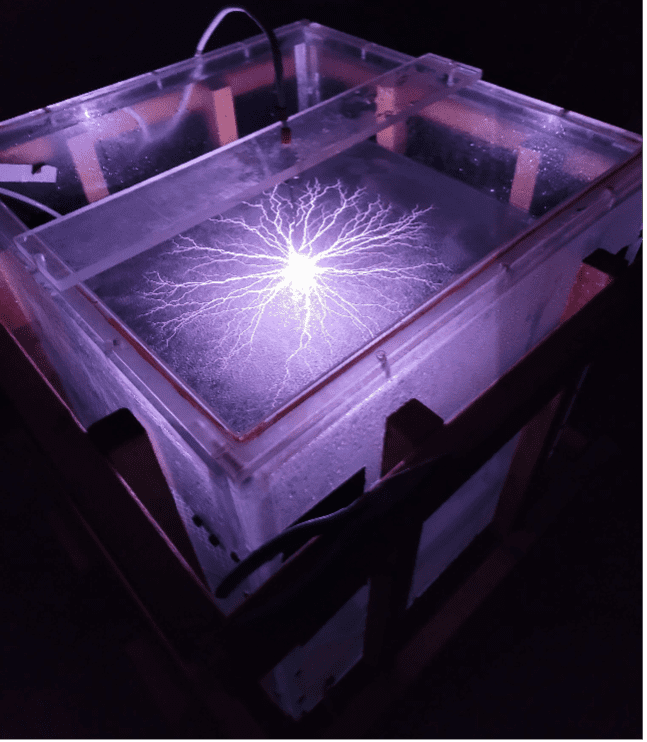Overview
Low temperature plasmas (LTPs) are partially ionized gases formed by the application of high voltages that contain a range of reactive species including neutral particles, excited states, ions, electrons and radicals. Low temperature means that while electrons are at high temperatures (typically a few to 10 eV with 1 eV=11,600 K), the atoms, molecules and ions of the plasma are typically close to room temperature. LTPs are at the core of many advanced technologies and without them, many of the conveniences of modern society would simply not exist. The applications of LTPs encompass chip manufacturing, electric propulsion, ozone generation, fluorescent lightning, and plasma TV, among others. Recent examples include plasma agriculture, plasma medicine, and decarbonization of industrial processes.
Although we study a range of different plasma systems, our research largely focuses on understanding of processes occurring at interfaces of plasmas and liquids. We are interested in investigations of physical and chemical mechanisms by which excited radical species and electrons produced by electrical plasmas induce chemical changes in liquids and thus exploit plasma chemistry for treatment of different aqueous contaminants in various water matrices including PFAS (poly- and perfluoroalkyl substances). We are similarly interested in the identification of oxidation byproducts and degradation pathways for a range of legacy and emerging contaminants.

Our research is translational, and we strive to convert fundamental knowledge into engineering solutions for water treatment applications, in particular development of guidelines for plasma reactor design and plasma reactor scaleup. See below examples of current research projects in our laboratory.
Current Projects
ECLIPSE: Exploring non-oxidative reaction pathways of atmospheric pressure plasmas
National Science Foundation
Nanofiltration Followed by Electrical Discharge Plasma for Destruction of PFAS and Co-Contaminants in Groundwater: A Treatment-Train Approach
GSI Environmental
Electrical discharge plasma technology for complete destruction of short-chain poly-and perfluoroalkyl substances (PFAS) in groundwater and wastewater
3M
Plasma-based Treatment of Per- and Polyfluoroalkyl Substances (PFAS): Complete Destruction of Short-chain PFAS through Targeted Synthesis of Surfactant Additives and Optimization of Plasma Chemistry
Semiconductor Research Corporation
PFAS Analysis, Reduction and Treatment Evaluations
GlobalFoundries
Low-Cost, Passive In Situ Treatment of PFAS-Impacted Groundwater Using Foam Fractionation in an Air Sparge Trench
CDM Federal Programs Corporation
Feasibility Study of Non-Thermal Plasma Treatment for Water VOC Removal for Space Applications
Blue Origin
PFAS Removal and Destruction from Semiconductor Manufacturing Wastewater
NYS Center of Excellence in Healthy Water Solutions
The Center for Plasma Interactions with Complex Interfaces
PICI, Department of Energy office of Fusion Energy Sciences
An Innovative Plasma Technology for Treatment of AFFF Rinsate from Firefighting Delivery Systems
SERDP-ESTCP, DoD